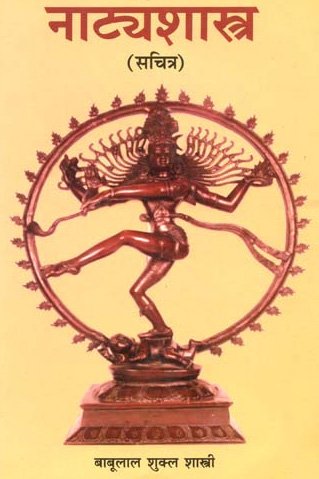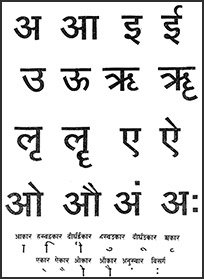Kampita, Kaṃpita: 19 definitions
Introduction:
Kampita means something in Hinduism, Sanskrit, Buddhism, Pali, Marathi, Hindi. If you want to know the exact meaning, history, etymology or English translation of this term then check out the descriptions on this page. Add your comment or reference to a book if you want to contribute to this summary article.
Alternative spellings of this word include Kampit.
In Hinduism
Natyashastra (theatrics and dramaturgy)
Source: Wisdom Library: Nāṭya-śāstra1a) Kampita (कम्पित) refers to a specific ‘movement of the head’ (śiras), according to the Nāṭyaśāstra chapter 8. The head is one of the six major limbs (aṅga) used to perform certain gestures (āṅgika). These gestures form a part of the histrionic representation (abhinaya). Instructions: when the movements in the Ākampita head are quick and copious. (Uses): The Kampita head is applicable (lit. desired) in anger argument understanding, asserting, threatening, sickness and intolerence.
1b) Kampita (कम्पित, “trembling”) also refers to a specific gesture (āṅgika) made with the cheeks (kapola or gaṇḍa), according to the Nāṭyaśāstra chapter 8. These gestures form a part of the histrionic representation (abhinaya). Instructions: (cheeks are) throbbing. Uses: in anger and joy.
1c) Kampita (कम्पित, “quivering”) refers to one of the four accents used in vocal representation (vācika), according to the Nāṭyaśāstra chapter 19.
1d) Kampita (कम्पित) refers to one of the thirty-three alaṃkāras (embellishments), according to the Nāṭyaśāstra chapter 29. These alaṃkāras, or, ‘embellishments of song’, depend upon the four types of varṇas, which refers to a specific order of musical notes (svara). They are attached to the songs of seven forms, although not generally used in the dhruvās.
According to the Nāṭyaśāstra, “kampita is trembling notes of three kalās in low pitch (lit. in the breast)”.
2) Kampitā (कम्पिता) is another name (synonym) for Prakampitā, a Sanskrit technical term referring to a specific ‘movement of the waist’ (kaṭi), according to the Nāṭyaśāstra chapter 10.
Source: Wisdom Library: SaṅgītaśiromaṇiKampita (कम्पित, “shaken”) refers to one of the fifteen aspects of gamaka (embellishments, ornamentation) that are used in Indian classical music (gāndharva), according to the Saṅgītaśiromaṇi 14.83-94. These gamakas refer to essential elements of the sthāyas (technical phrases) of rāgas (melodic modes). Accordingly, “when a vibration (kampa) is in the speed of half a druta, they regard it as a kampita”.
Source: archive.org: The mirror of gesture (abhinaya-darpana)1) One of the Nine Movements of the Head. Kampita (nodded): shaking the head up and down. Usage: indignation, saying “Halt!”, enquiry, summoning, threatening, etc.
2) One of the Twenty-four Heads. Kampita: raising the head high and shaking it. Usage: recognition, indignation, consideration (vitarka), threatening, hastening, questioning.
Source: archive.org: Shanmukha 07-3-1981Kampita (कम्पित).—The definition of this gamaka as given by Prof. Sambamoorthy runs: “A large shake—the manipulation of the note is such that there is not even the remotest suggestion of the adjacent note”. Analysing snatches of music in both the styles, vocal and instrumental, one finds that although the kampita-gamaka may not be exclusive to the South Indian style, its use in Carnatic music far exceeds that in the Hindustani style. The employment of this particular type of gamaka, it seems therefore, becomes one identifiable point of divergence between the two systems.
Source: archive.org: Northern Indian Music Volume IKampita (कम्पित).—The shake (kampita), now called khaṭkā, refers to one of the gamakas (graces):—“The kampita-gamaka lasts a semi-quaver (i.e. ¼ of a mātrā)”. (Saṅgitaratnākara 2.3.91) “A shake of the note at twice the speed of a quaver (i.e. ¼ mātrā) is known as kampita”. (Saṅgītasamayasāra 1.50)
Source: Shodhganga: Elements of Art and Architecture in the Trtiyakhanda of the Visnudharmottarapurana (natya)Kampita (कम्पित) refers to one of the seven movements of the head” (in Sanskrit Dramas), as conveyed through Āṅgikābhinaya: one of the four divisions of Abhinaya or “ways to convey or represent one’s emotion to others”, according to the Viṣṇudharmottarapurāṇa, an ancient Sanskrit text which (being encyclopedic in nature) deals with a variety of cultural topics such as arts, architecture, music, grammar and astronomy.—The āṅgikābhinaya includes the histrionic representation of the limbs which is simply known as physical gestures. In the Viṣṇudharmottarapurāṇa, seven types of movements of the head are recorded. Kampita denotes shivering head shows anger, threatening, arguing etc.

Natyashastra (नाट्यशास्त्र, nāṭyaśāstra) refers to both the ancient Indian tradition (shastra) of performing arts, (natya—theatrics, drama, dance, music), as well as the name of a Sanskrit work dealing with these subjects. It also teaches the rules for composing Dramatic plays (nataka), construction and performance of Theater, and Poetic works (kavya).
Vyakarana (Sanskrit grammar)
Source: Wikisource: A dictionary of Sanskrit grammarKampita (कम्पित).—The same as कम्पन (kampana). See कम्पन (kampana) above

Vyakarana (व्याकरण, vyākaraṇa) refers to Sanskrit grammar and represents one of the six additional sciences (vedanga) to be studied along with the Vedas. Vyakarana concerns itself with the rules of Sanskrit grammar and linguistic analysis in order to establish the correct context of words and sentences.
Purana and Itihasa (epic history)
Source: archive.org: Shiva Purana - English TranslationKaṃpita (कंपित) refers to “nervously (looking around)”, according to the Śivapurāṇa 2.4.4 (“Search for Kārttikeya and his conversation with Nandin”).—Accordingly, as Brahmā narrated to Nārada: “On hearing the words of Śiva they nervously (kaṃpita) looked at one another and spoke before the lord one by one”.

The Purana (पुराण, purāṇas) refers to Sanskrit literature preserving ancient India’s vast cultural history, including historical legends, religious ceremonies, various arts and sciences. The eighteen mahapuranas total over 400,000 shlokas (metrical couplets) and date to at least several centuries BCE.
Languages of India and abroad
Pali-English dictionary
Source: BuddhaSasana: Concise Pali-English Dictionarykampita : (pp. of kampati) trembled; wavered. || (pp. of kampeti and kampati)

Pali is the language of the Tipiṭaka, which is the sacred canon of Theravāda Buddhism and contains much of the Buddha’s speech. Closeley related to Sanskrit, both languages are used interchangeably between religions.
Marathi-English dictionary
Source: DDSA: The Molesworth Marathi and English Dictionarykampita (कंपित).—p S Shaking, quivering, trembling.
Marathi is an Indo-European language having over 70 million native speakers people in (predominantly) Maharashtra India. Marathi, like many other Indo-Aryan languages, evolved from early forms of Prakrit, which itself is a subset of Sanskrit, one of the most ancient languages of the world.
Sanskrit dictionary
Source: DDSA: The practical Sanskrit-English dictionaryKampita (कम्पित).—p. p.
1) Trembling, shaking.
2) Shaken, swung.
-tam 1 Trembling, tremor.
2) Causing to shake.
Source: Cologne Digital Sanskrit Dictionaries: Shabda-Sagara Sanskrit-English DictionaryKampita (कम्पित).—mfn.
(-taḥ-tā-taṃ) Shaking, shaken, trembling. n.
(-taṃ) Trembling, a trembling, a tremor E. kapi and kta aff.
Source: Cologne Digital Sanskrit Dictionaries: Cappeller Sanskrit-English DictionaryKampita (कम्पित).—[adjective] trembling; shaken, swing; [neuter] a trembling, tremor.
Source: Cologne Digital Sanskrit Dictionaries: Monier-Williams Sanskrit-English Dictionary1) Kampita (कम्पित):—[from kamp] mfn. trembling, shaking, [Mahābhārata; Ṛtusaṃhāra]
2) [v.s. ...] caused to tremble, shaken, swung, [Mahābhārata iv, 1290; Tattvasamāsa]
3) [v.s. ...] n. trembling, a tremor.
4) Kampīṭa (कम्पीट):—[from kamp] n. trembling tremor, [cf. Lexicographers, esp. such as amarasiṃha, halāyudha, hemacandra, etc.]
Source: Cologne Digital Sanskrit Dictionaries: Yates Sanskrit-English DictionaryKampita (कम्पित):—(taṃ) 1. n. A trembling.
Source: DDSA: Paia-sadda-mahannavo; a comprehensive Prakrit Hindi dictionary (S)Kampita (कम्पित) in the Sanskrit language is related to the Prakrit words: Kaṃpia, Viccholia.
[Sanskrit to German]
Sanskrit, also spelled संस्कृतम् (saṃskṛtam), is an ancient language of India commonly seen as the grandmother of the Indo-European language family (even English!). Closely allied with Prakrit and Pali, Sanskrit is more exhaustive in both grammar and terms and has the most extensive collection of literature in the world, greatly surpassing its sister-languages Greek and Latin.
Hindi dictionary
Source: DDSA: A practical Hindi-English dictionaryKaṃpita (कंपित) [Also spelled kampit]:—(a) trembled; quivered, shivered; wavered.
...
Kannada-English dictionary
Source: Alar: Kannada-English corpusKaṃpita (ಕಂಪಿತ):—
1) [adjective] shaken; trembled (as from cold).
2) [adjective] frightened; filled with fright; terrified.
--- OR ---
Kaṃpita (ಕಂಪಿತ):—
1) [noun] the act of or fact of trembling; a trembling, shaking or shivering.
2) [noun] (mus.) an instance of moving rapidly above and below a note in a very regulated manner.
3) [noun] (dance) an act of shaking the head up and down in quick succession, to indicate recognition, perception, acceptance, provocation, enquiry, etc.
4) [noun] (dance.) a shaking of the shank.
5) [noun] unsteadiness of one’s voice in singing (considered as a fault).
Kannada is a Dravidian language (as opposed to the Indo-European language family) mainly spoken in the southwestern region of India.
See also (Relevant definitions)
Starts with: Kampitam.
Ends with: Akampita, Anukampita, Avakampita, Nishkampita, Pakampita, Parikampita, Prakampita, Sampakampita, Sankampita, Utkampita, Vikampita, Vipadakampita.
Full-text (+11): Akampita, Kamp, Viccholia, Avakampita, Varna, Prakampita, Kampitam, Gamaka, Kampit, Compit, Anukampita, Vikampitam, Akampya, Anukampitatman, Kampia, Kati, Janata, Nine Heads, Twenty-four Heads, Vikampita.
Relevant text
Search found 11 books and stories containing Kampita, Kaṃpita, Kampitā, Kampīṭa; (plurals include: Kampitas, Kaṃpitas, Kampitās, Kampīṭas). You can also click to the full overview containing English textual excerpts. Below are direct links for the most relevant articles:
Garga Samhita (English) (by Danavir Goswami)
Verse 1.14.36 < [Chapter 14 - The Liberation of Śakaṭāsura and Tṛṇāvarta]
Verse 1.16.1 < [Chapter 16 - Description of Śrī Rādhikā’s Wedding]
Vishnudharmottara Purana (Art and Architecture) (by Bhagyashree Sarma)
1.3. Elements of Drama (c): Bodily Movements < [Chapter 3 - Drama and Dance]
1.3. Elements of Drama (e): Gatiprasāra (gait extension) < [Chapter 3 - Drama and Dance]
Bhakti-rasamrta-sindhu (by Śrīla Rūpa Gosvāmī)
Verse 2.2.4 < [Part 2 - Ecstatic Expressions (anubhāva)]
Abhinaya-darpana (English) (by Ananda Coomaraswamy)
Sahitya-kaumudi by Baladeva Vidyabhushana (by Gaurapada Dāsa)
Text 7.28 < [Chapter 7 - Literary Faults]
Text 10.181 < [Chapter 10 - Ornaments of Meaning]
Chaitanya Bhagavata (by Bhumipati Dāsa)
Verse 2.12.50 < [Chapter 12 - The Glories of Nityānanda]
Verse 3.5.615 < [Chapter 5 - The Pastimes of Nityānanda]
Verse 2.23.381 < [Chapter 23 - Wandering about Navadvīpa On the Day the Lord Delivered the Kazi]